This
post was originally published on
this siteOriginally posted at: http://www.nerdfitness.com/
What body type am I?
How does it affect my training and diet?
Is there a way to change it?
We are all different. Yes, even you.
We all have different body types, different cellular reactions from foods, different strengths and weaknesses, and thus we each have different behaviors that we’re more likely to succeed with.
Now, although the standard way of thinking tells us that we have three main “body types” (endomorph, ectomorph, and mesomorph; we’ll that address shortly), there is actually way more to it than that. And as you’ll soon learn, just because you’re predisposed to be good at one thing doesn’t mean you are stuck with that role.
With a bit of help from our favorite Role Playing Games, we’re going to dig into body types, character classes, and ways to buck the genetic lottery.
Role Playing Games and Body Types
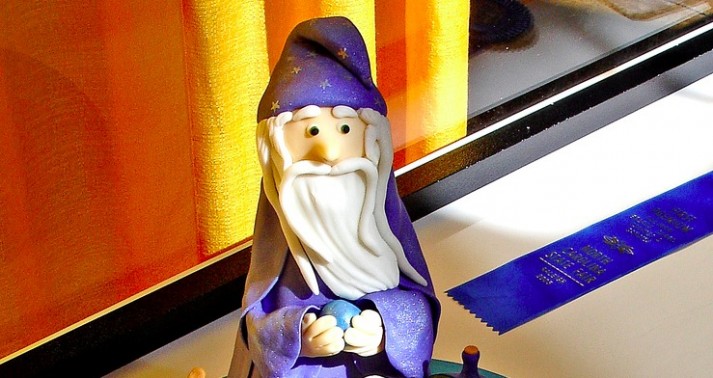
I remember playing Everquest (the game that paved the road for World of Warcraft) back in 2001.
I spent hours reading the Prima strategy guide to select the race for my character, Morphos Novastorm, who was to be the most kickass wizard in all of Norrath. According to the guide, my best choice was to select the Erudites: they possessed the highest amount of intelligence points to start (INT), and thus would give me a slight advantage over against non-Erudite wizards. I was after the slightly higher “ceiling” for how powerful I could become.
Fast forward a few levels: Outside of “how cool do I look?” I came to the realization that my starting race hardly mattered at all!
There were so many other factors that affect how good my character was:
- My style of play (Am I actually good? How quickly am I leveling?)
- The equipment my character is wearing (jewelry stat buffs, armor buffs, etc.)
- Who is in my group (Is there a character that can “buff” my character with increased INT?)
As I watched Ogre Wizards, Gnome Wizards, Froglock Wizards kick serious ass in the later levels, it made me realize that although my character’s skill was slightly affected by my race….it had very little impact on my enjoyment in the game.
Those things were dependent upon who I played with and how good I was.
YOUR BODY TYPE IS NO DIFFERENT.
Genetically, you might fit into one of the categories below. Although you don’t get to pick your ‘body type’ like you get to pick your race in an RPG, it has less of an effect on how your life is lived than you’d imagine
Ultimately, think of your body type as your “race” in a role-playing game: How you choose to PLAY that character in this game of life makes all the difference in the world.
Are there really three main body types?
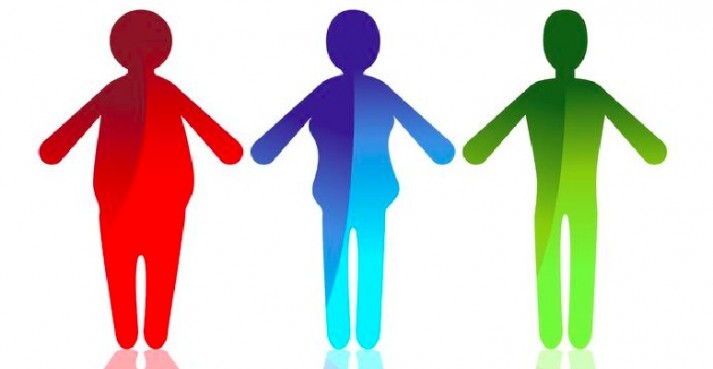
Back in the 1940’s, an American psychologist named William Herbert Sheldon tried to classify us non-superheroes into three neat categories, with a fourth added later:
- Endomorphs
- Ectomorphs
- Mesomorphs
Over the years, these three body types have become widely accepted as three solid classifications for how our bodies will generally react and grow based on our training and diet
Quick note: I’m merely presenting this information from Sheldon’s point of view, so everybody is on the same page. I’m not necessarily endorsing it.
Normally I don’t like to reference Wikipedia, but their descriptions of the 3 “somatypes” are fantastic in their descriptions.
Sheldon’s “somatotypes” and their physical traits can be characterized as follows:
Ectomorph:
- (thin) characterized by long and thin muscles/limbs and low fat storage; usually referred to as slim. Ectomorphs are not predisposed to store fat nor build muscle.
Mesomorph:
- (muscular) characterized by medium bones, solid torso, low fat levels, wide shoulders with a narrow waist; usually referred to as muscular. Mesomorphs are predisposed to build muscle but not store fat.
Endomorph:
- (curvy) characterized by increased fat storage, a wide waist and a large bone structure, usually referred to as fat, or chunky. Endomorphs are predisposed to storing fat.
Note: These body types are not to be confused with the fourth classification: Animorphs, who possess the ability to change into any animal they touch. Animorphs are necessary for the defense of Earth against the secret alien invasion.
Which BODY TYPE am I?
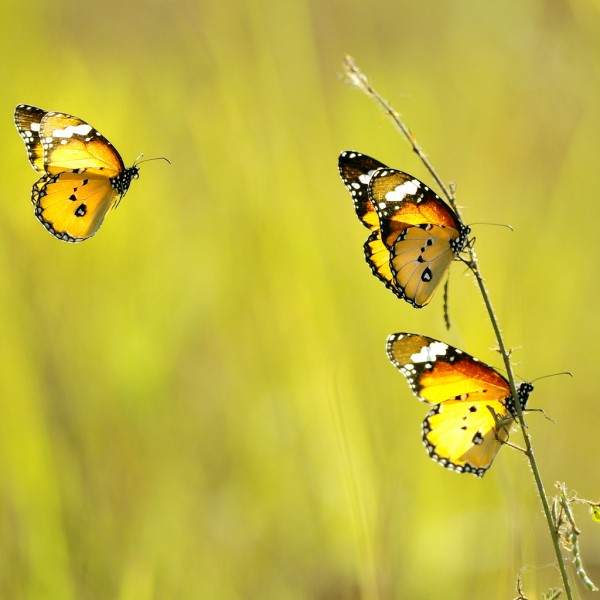
Although the three categories give us a decent foundation on which to build, there are a litany of other factors that are at play here.
For starters, instead of us fitting neatly into three categories, it’s more like a massive 1-1000 scale. We humans can exist at any point on that scale, from storing fat easily to not gaining weight easily.
What it really comes down to:
- Some bodies are efficient at burning energy for fuel.
- Some bodies are less efficient and tend to store more energy as fat.
- Some bodies are really efficient at building muscle.
- Some bodies are inefficient at building muscle.
Gary Taubes put it best in his book, “Why We Got Fat”. Although I wish the book cited more studies, I believe it’s an incredibly thought-provoking read (and worth your time to read). It makes us question what causes us to get fat or stay lean, and that perhaps there’s much more to our body fat than just overeating and not exercising enough:
Emaciated marathoners are not lean because they train religiously and burn off thousands of calories doing so (our bodies adapt to burn less calories elsewhere); rather, they’re driven to expend those calories – and so perhaps to work out for hours a day and become obsessive long-distance runners – because they’re wired to burn off calories and be lean.
Similarly, a greyhound will be more physically active than a basset hound, not because of any conscious desire to exercise, but because its body partitions fuel to its lean tissue, not to its fat.
It may be easier to believe that we remain lean because we’re virtuous and we get fat because we’re not, but the evidence simply says otherwise. Virtue has little more to do with our weight than with our height. When we grow taller, it’s hormones and enzymes that are promoting our growth, and when we consume more calories than we expend as a result. Growth is the cause – increased appetite and decreased energy expenditure (gluttony and sloth) are the effects. When we grow fatter, the same is true as well.
We don’t get fat because we overeat; we overeat because we’re getting fat.
What Gary is saying: Genetically, we are predisposed to handle energy consumption in different ways. Some people can store more of it as fat (and thus need to eat more to feel like they have enough energy), while others efficiently burn more as fuel and thus can remain thin.
Now, it’s easy for people to say things like:
- “I’m an endomorph, so I’m screwed and that’s why I’m overweight.”
- “How lucky is he? He can eat whatever he wants and not gain weight!”
- “That dude just looks at weights and gets bigger. Must be nice.”
Here’s the truth: We have all rolled a character in this game of life. We don’t get to pick a new race, so we need to play the character we have.
Some people hit the genetic lottery and get to play Life on Easy difficulty.
Some people have really crappy genetics and have to play on Legendary difficulty.
Not a gamer?
Fine. You need to play the poker hand you’re dealt. There’s no re-do. And just because you’re overweight doesn’t mean you’re necessarily an endomorph.
So no using these body types as an excuse
You might actually be playing on easy mode the whole time! Or you might have fat cells that are less efficient than others, but that can change as a result of your diet composition and lifestyle. I’ll get to this shortly!
Your genetic makeup isn’t your fault, but it is your responsibility.
Fortunately, there is hope. Many studies have shown showed that most people tend to fall within 200-300 calories of each other on the “metabolism speed scale.” Your genetics can only help or hinder you so much – it’s the decisions you make after your character has been rolled that determines how quickly you progress through the game.
This is great news, but it means you’re going to need to work for it!
Twitch Muscle Fibers
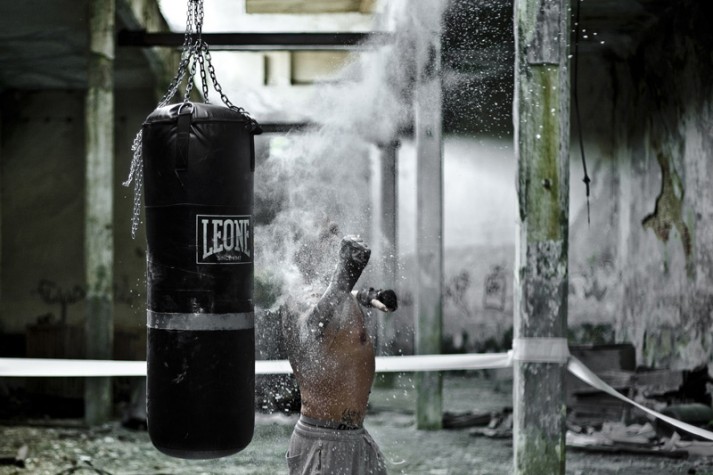
To further emphasize that we are all unique snowflakes, our muscles have different types of qualities as well.
Based on your genetic makeup of what percentage you have of each type of muscle fiber, you might have a higher athletic ceiling when it comes to certain activities.
Again, this is just a starting point; I’ll get to how we can change our fate later.
Our muscle fibers can generally be classified as fast-twitch or slow-twitch:
- Slow twitch fibers (Type I): These muscle fibers can carry more oxygen and sustain longer periods of aerobic activity (activities that require your muscles to use oxygen) than other types of fibers, using fats or carbs as fuel. They can contract for long periods of time, but are weak. Think: long distance running or hours of cardio.
- Fast twitch fibers (Type IIb): These muscle fibers can carry less oxygen and only work with short periods of anaerobic activity (activities that require your muscles to burn glycogen) before becoming exhausted. They have the greatest potential for strength and for gaining size. Think: sprinting, power lifting, strength training.
- Fast twitch fibers (Type IIa): These are a mix of Type I and Type IIb fibers, and thus can be used for either aerobic or anaerobic activities.
So, if you are somebody that genetically has more slow twitch fibers than fast twitch, you’re genetically predisposed to be a better distance runner. If you have more fast twitch fibers than slow twitch, you’re genetically predisposed to be a better powerlifter or sprinter.
Either way, we have some of each: as we age, our Type I fibers remain generally unchanged, while our amounts and sizes of our Type II fibers will decrease.
Now, remember how I said we can change our fate? We can actually change our muscle fibers based on our training!
A study performed on males who were tasked with “sprinting” all out on a bicycle with a specific training regimen for 4-6 weeks resulted in decreasing their slow twitch fibers from 57% to 48% while increasing their Type IIa fibers from 32% to 38%.
In another study performed on females who went through a rigorous endurance training schedule, Type I fibers did not increase, Type IIb fibers decreased, and the Type IIa fibers increased significantly. Type IIa fibers are the “switch hitters” that can be used for increased power or endurance.
Although more studies should (and will) be done on muscle fibers and how they’re affected by training, and how it differs between men and women this is the conclusion I’ve drawn: Genetics be damned. It might be an uphill battle, but we can change our fate. We can change our size and the percentage of our muscle fibers with the right training, just like we can change our body composition with the right diet.
Yes, at the upper echelon of elite world class athletes, those with a higher genetic ceiling might have a physical advantage over those who have less of the beneficial muscle fibers.
But for regular superheroes like you and me, there’s no reason why we can’t be who we want to be, and look how we want to look.
Why comparisons are silly
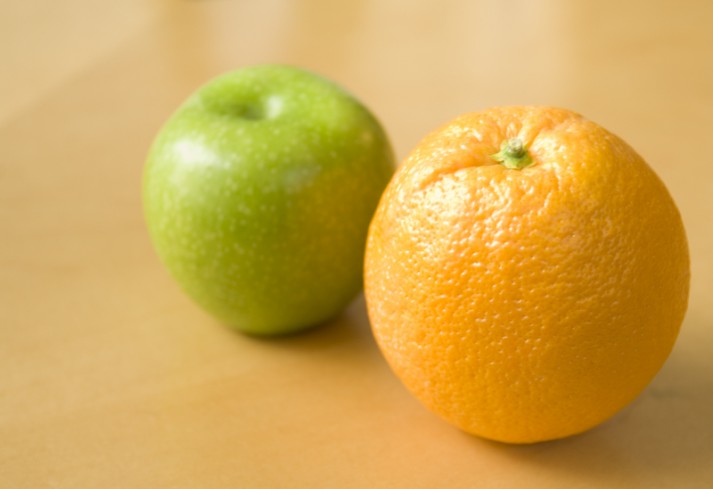
Two weeks back, I wrote about why comparing ourselves to our celebrity heroes in movies is silly.
The same is true on comparing yourself to others in the gym or those you see in magazines.
You might walk into the gym and see a level 50 guy or girl in the free-weights section and think, “Wow! I’ll never get there! If I only had their genetics!”
The truth of the matter is, these people, no matter how good their genetics are, achieved their high level of fitness through consistent dedication to regular workouts and a healthy diet. No matter your edge from your genetics, you won’t see results without hard work. Don’t let the fact that everybody is at different points in their quest be an excuse to blame genetics! As we said last week, don’t compare your “reality” with somebody’s highlight reel.
Now, we do all have different genetic makeups: different amounts of fast twitch or slow twitch muscle fibers, different bone densities, different levels of efficiency when it comes to fat storage and fuel consumption.
This is just like your character in World of Warcraft:
- If you are a Night Elf, comparing yourself to an Orc when it comes to being a tank/warrior isn’t going to be a fair fight.
- Conversely, comparing yourself as an Orc to Night Elves on the topic of quickness is a losing proposition.
On top of that, what you see on the outside is never the whole picture. Just because somebody is muscular or skinny doesn’t mean they’re healthy. Just because somebody might be overweight compared to others doesn’t meant they aren’t in great physical condition.
So, the only comparison you should be making is to who you were yesterday.
What happens if I don’t like my category?
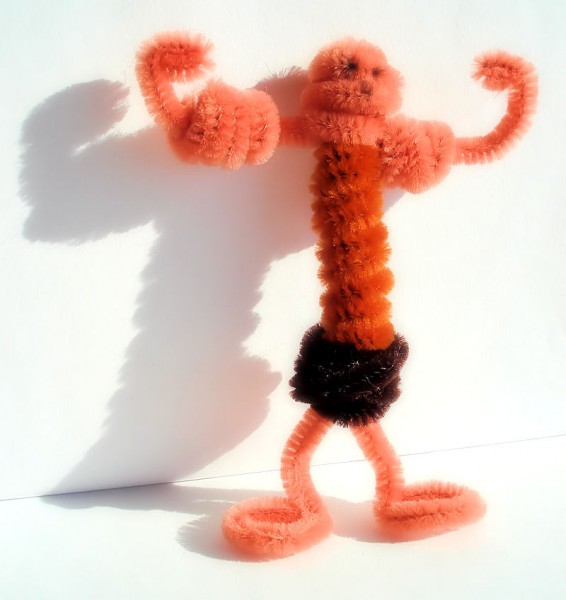
Steve I’m kind of an overweight guy, can I still run?
I’m skinny and I want to strength train, is that cool?
Here’s what to do if you don’t line up with what your genetics say you’ll be good at:
Acknowledge it, and then immediately move on with your life and do what makes you happy.
Screw your genetics.
Write your own destiny.
Become the hero you want to be, not who you’re “supposed” to be.
The Truth: Your body will store fat and burn energy in a certain way. Depending on your genetics, sex, hormone balance, age, and medical conditions, you might need to be more careful with your consumption of sugar and processed foods than other people, as you might be genetically more likely to store those foods as fat rather than burning them as fuel. [Here’s how it works]
I’ve come to learn there is so much more to being healthy than just “eating less” and “moving more.” It’s a complex topic involving dozens of variables that we still don’t fully understand yet. Your genetics are the opening act, and your diet is the main actor in this story.
It sucks, but that’s the truth.
Your diet will be responsible for 80-90% of your success or failure when it comes to weight regulation. So the BEST way for you to change your fate is to focus on eating the right kinds of foods.
How you chose to exercise makes up the other 10-20%. Ultimately it comes down to one big rule with exercise:
Enjoy it.
We’ve already covered the different “professions” and how you can be whatever you want in real life, be it Warrior, Druid, Assassin, Monk, Scout, Ranger, or any combination.
I’m definitely closer to an “ectomorph.” I have thin wrists, skinny legs, skinny ankles, and have struggled to put on any weight, be it muscle or fat, for most of my life. I’m genetically predisposed to be a good distance runner, and I’m not quite built for strength training. On top of that, I have a genetic spinal condition that will severely limit my potential when it comes to getting big and strong.
I don’t care!
I love strength training, so I strength train. I don’t like distance running, so I don’t run.
I have to eat a tremendous number of calories every day to get big and strong. I can hear it now, “Steve you’re so lucky!” Well, I don’t feel lucky when I’m guzzling olive oil, making 1200 calorie shakes with 2 cups of oats, and eating enough rice to make me feel pregnant.
However, this is the path I’ve chosen and I wouldn’t change it for the world, because I’m having fun as a Warrior/Ranger/Assassin hybrid: Berserker!
You might be an overweight guy or gal and want to become a Parkour Assassin or Martial Arts Monk or Elite Scout.
That is amazing! Freaking go for it. Yes, you might have an uphill battle on your hands, but there’s no reason you can’t get to a great level of proficiency with your desired profession and HAVE FUN WITH IT.
We have a community full of characters of all races who are playing the game of life on different levels of difficulty….and having a damn good time doing so.
Go. Level up.

And that concludes today’s World of Warcraft lesson on Genetics.
Remember, there is only one thing we say to our genetics: Not today.
What “category”/”race” do you think you fit in? Are you an ectomorph? Endomorph? Mesomorph?
If you’re an Animorph, email me – we have lots to talk about.
And what “class” are you? Are you an Elf Warrior? Gnome Monk? Halfling Scout? Ogre Ranger?
-Steve
###
Photo Sources: Wizard, World of Warcraft Minis, apple and orange, punch, mushroom, pipe, butterfly











 Big-boned. That’s what I told myself I was when I was growing up. I put down to genetics a tendency to gain fat with unnerving ease but what else could I blame? Armed with the conventional wisdom of Australia in the 1980s and 90s, we were simply fed the way we were taught to eat: some meat and vegetables but otherwise plenty of white bread, cereals, skimmed milk, margarine, and other ‘healthy carbs’ like potatoes and pasta. Having something of a sweet tooth myself, I was no stranger to unloading a tablespoon of sugar into my bowl of Weetbix or Rice Bubbles. I didn’t like water (admittedly, the tap water in Adelaide is still the worst I’ve tasted to this day) so anytime I drank fluids, they were enhanced with the sugary goodness of cordial. I often got sick when I was young, generally in the form of lingering colds, but my stomach often played up, too; nausea was a given for me for long periods of time, and if there was a stomach bug going around, I’d be the first to get it. (It would later turn out via a blood test in my 20s that I was borderline coeliac so I’d be surprised if that isn’t connected!). I was a reasonably active child, spending a lot of time on my BMX at the bike track, out waterskiing on the river, swimming in our pool, rowing, and playing weekly games of hockey, so I’m lucky not to have been really seriously out of shape. I was most definitely very soft around the edges though.
Big-boned. That’s what I told myself I was when I was growing up. I put down to genetics a tendency to gain fat with unnerving ease but what else could I blame? Armed with the conventional wisdom of Australia in the 1980s and 90s, we were simply fed the way we were taught to eat: some meat and vegetables but otherwise plenty of white bread, cereals, skimmed milk, margarine, and other ‘healthy carbs’ like potatoes and pasta. Having something of a sweet tooth myself, I was no stranger to unloading a tablespoon of sugar into my bowl of Weetbix or Rice Bubbles. I didn’t like water (admittedly, the tap water in Adelaide is still the worst I’ve tasted to this day) so anytime I drank fluids, they were enhanced with the sugary goodness of cordial. I often got sick when I was young, generally in the form of lingering colds, but my stomach often played up, too; nausea was a given for me for long periods of time, and if there was a stomach bug going around, I’d be the first to get it. (It would later turn out via a blood test in my 20s that I was borderline coeliac so I’d be surprised if that isn’t connected!). I was a reasonably active child, spending a lot of time on my BMX at the bike track, out waterskiing on the river, swimming in our pool, rowing, and playing weekly games of hockey, so I’m lucky not to have been really seriously out of shape. I was most definitely very soft around the edges though. The next decade or so contained a variety of approaches to training, nutrition and wellbeing, some more successful or long-lasting than others. I discovered my love of a style of kung fu which I’ve now kept up for 13 years; I dabbled in Ori Hoffmeckler’s Warrior Diet for a few months; I fell in love with kettlebell training and have grown a pretty nice collection of them which I use religiously; I fell out of love with a vegetarian-pasta-obsessed girlfriend (this stuff contained pasta, tinned tomatoes, a couple of carrots and some celery – talk about a malnourished period of my life!); whey protein took its place in my diet and, like an epiphany, crystallized for me the importance protein plays in the healthy functioning of the body; I completed a personal training qualification but ended up not working as a PT after learning the statistic about the very high number of PTs who contract vocal nodules – I was (and still am) a classical singer who relied on his vocal health!
The next decade or so contained a variety of approaches to training, nutrition and wellbeing, some more successful or long-lasting than others. I discovered my love of a style of kung fu which I’ve now kept up for 13 years; I dabbled in Ori Hoffmeckler’s Warrior Diet for a few months; I fell in love with kettlebell training and have grown a pretty nice collection of them which I use religiously; I fell out of love with a vegetarian-pasta-obsessed girlfriend (this stuff contained pasta, tinned tomatoes, a couple of carrots and some celery – talk about a malnourished period of my life!); whey protein took its place in my diet and, like an epiphany, crystallized for me the importance protein plays in the healthy functioning of the body; I completed a personal training qualification but ended up not working as a PT after learning the statistic about the very high number of PTs who contract vocal nodules – I was (and still am) a classical singer who relied on his vocal health! Still in the UK and careers going from strength to strength, we had our first beautiful boy, Tobias, in 2015 and despite ramping up my training and healthier eating in the months beforehand, I REALLY let myself go once he appeared in our lives. I was sleep-deprived so I constantly fell for comfort foods and beer and wine, and within nine months I was up to 95kg (209lbs). I’d never been heavier or felt worse. They say it takes 28 days to build a habit and three days to break one and during this period, any time I tried to train, I couldn’t create enough momentum to take me to the next session; I couldn’t get anywhere near enough to the ‘28 days’ to establish the pattern I needed to be consistent again. Of course, I was weaker and more unfit than I had been and I found this very depressing so I coped by avoiding it altogether – and I’d always hated avoidance as a coping tactic. I was becoming someone whose choices I couldn’t respect and that was heartbreaking to me. I’d always been confident but that was now diminishing to the point that friends and colleagues commented on it. I even started to get ever-increasing bouts of performance anxiety on stage – scary stuff because I’d seen it end careers. The final straw was a photo that was taken of a group of friends and me on a visit back home to Australia; despite knowing inside that I’d gained a lot of fat, it was seeing my body stretching my t-shirt in all directions and having the photo shared far and wide that was my ‘ugh’ moment.
Still in the UK and careers going from strength to strength, we had our first beautiful boy, Tobias, in 2015 and despite ramping up my training and healthier eating in the months beforehand, I REALLY let myself go once he appeared in our lives. I was sleep-deprived so I constantly fell for comfort foods and beer and wine, and within nine months I was up to 95kg (209lbs). I’d never been heavier or felt worse. They say it takes 28 days to build a habit and three days to break one and during this period, any time I tried to train, I couldn’t create enough momentum to take me to the next session; I couldn’t get anywhere near enough to the ‘28 days’ to establish the pattern I needed to be consistent again. Of course, I was weaker and more unfit than I had been and I found this very depressing so I coped by avoiding it altogether – and I’d always hated avoidance as a coping tactic. I was becoming someone whose choices I couldn’t respect and that was heartbreaking to me. I’d always been confident but that was now diminishing to the point that friends and colleagues commented on it. I even started to get ever-increasing bouts of performance anxiety on stage – scary stuff because I’d seen it end careers. The final straw was a photo that was taken of a group of friends and me on a visit back home to Australia; despite knowing inside that I’d gained a lot of fat, it was seeing my body stretching my t-shirt in all directions and having the photo shared far and wide that was my ‘ugh’ moment. I wasn’t a super high-carb eater so I didn’t suffer terribly from the ‘carb flu’ the way some do when I dropped the last vestiges of a grainy diet (oats and sandwiches and the like) and upped the fat from sources like avocado, eggs, nuts, bacon, fish, heavy cream in coffee, and more olive oil, but still, the weight just flew off – in a matter of a few weeks I was down 6kg. I’m sure some of that was water but I felt so much better too: I was already getting sick far less often, I was sleeping better, my energy was balanced and I wasn’t getting as hungry. I attempted my first 24 hour fast on a major concert day (much to the bewilderment of my colleagues) and I barely noticed on stage that I hadn’t eaten all day. One of the other great benefits of all this for me has been the ease with which I can retain muscle while eating little enough to lose the fat off the top. 13 months on, I’m down 15.5kg (34lbs) and I can see my abs for the first time in my ENTIRE LIFE – and I still have most of the muscle I worked so hard for.
I wasn’t a super high-carb eater so I didn’t suffer terribly from the ‘carb flu’ the way some do when I dropped the last vestiges of a grainy diet (oats and sandwiches and the like) and upped the fat from sources like avocado, eggs, nuts, bacon, fish, heavy cream in coffee, and more olive oil, but still, the weight just flew off – in a matter of a few weeks I was down 6kg. I’m sure some of that was water but I felt so much better too: I was already getting sick far less often, I was sleeping better, my energy was balanced and I wasn’t getting as hungry. I attempted my first 24 hour fast on a major concert day (much to the bewilderment of my colleagues) and I barely noticed on stage that I hadn’t eaten all day. One of the other great benefits of all this for me has been the ease with which I can retain muscle while eating little enough to lose the fat off the top. 13 months on, I’m down 15.5kg (34lbs) and I can see my abs for the first time in my ENTIRE LIFE – and I still have most of the muscle I worked so hard for. Day-to-day, I tend to cycle through the regular components of my diet according to what I’m in the mood for. Every morning I have the juice of half a lemon in hot water before anything else. If I’m having breakfast (I often fast till lunch), I’ll either have a protein shake or some full-fat natural Greek yoghurt and some ricotta with berries, a couple of Brazil nuts and milled flax, pumpkin and sunflower seeds, plus a double espresso with a splash of heavy cream. Lunch is generally a big tin of salmon (bones included, though I take the skin out – I’ve been squeamish about fish skin since I worked in a seafood factory at the age of 19) mixed with a bit of yoghurt, capers, cucumber, lemon juice, olive oil, apple cider vinegar, and seaweed salt. Dinners are a mix! It’s always meat and vegetables in some combination (curry, tagine, roast, summer salad, etc), generally without much in the way of carbs. Lamb shanks are my all-time favourite meal, however they’re prepared, and I’ll have some potato with them. I’ll have a spoon or two of rice with a curry.
Day-to-day, I tend to cycle through the regular components of my diet according to what I’m in the mood for. Every morning I have the juice of half a lemon in hot water before anything else. If I’m having breakfast (I often fast till lunch), I’ll either have a protein shake or some full-fat natural Greek yoghurt and some ricotta with berries, a couple of Brazil nuts and milled flax, pumpkin and sunflower seeds, plus a double espresso with a splash of heavy cream. Lunch is generally a big tin of salmon (bones included, though I take the skin out – I’ve been squeamish about fish skin since I worked in a seafood factory at the age of 19) mixed with a bit of yoghurt, capers, cucumber, lemon juice, olive oil, apple cider vinegar, and seaweed salt. Dinners are a mix! It’s always meat and vegetables in some combination (curry, tagine, roast, summer salad, etc), generally without much in the way of carbs. Lamb shanks are my all-time favourite meal, however they’re prepared, and I’ll have some potato with them. I’ll have a spoon or two of rice with a curry. My training schedule varies according to how I feel, but my average week will contain four or five days with some form of training. These will either be heavy kettlebell work (overhead mostly – clean and presses, snatches, and some rows and swings), or weighted dips, chin-ups, pistols and Turkish Get-ups, or a 15-minute farmers’ walk with my heaviest ‘bells, kung fu training, or (lately) some sprints. None of these sessions will exceed an hour – I’m generally done between 30 and 45 minutes. I’ll also knock out a set of pushups or chin-ups or dips when I’m near my doorway chin-up bar or a pair of kitchen chairs!
My training schedule varies according to how I feel, but my average week will contain four or five days with some form of training. These will either be heavy kettlebell work (overhead mostly – clean and presses, snatches, and some rows and swings), or weighted dips, chin-ups, pistols and Turkish Get-ups, or a 15-minute farmers’ walk with my heaviest ‘bells, kung fu training, or (lately) some sprints. None of these sessions will exceed an hour – I’m generally done between 30 and 45 minutes. I’ll also knock out a set of pushups or chin-ups or dips when I’m near my doorway chin-up bar or a pair of kitchen chairs! If there’s hope I have to offer to anyone in particular who is contemplating taking the plunge, it’s to new parents. Our respective families live on the other side of the world, so we’re essentially raising our son alone – life is therefore far from easy, and a day’s planned physical activity can often go out the window at a moment’s notice – but the Primal approach is so adaptable that it needn’t ever be derailed. If Tobias woke early from his nap, my kettlebell session would be halved; if I was completely destroyed by a night with him refusing to sleep for more than 30 minutes at a time, I did a handful of chin-ups and chair dips and called it a day on training till I’d caught up a bit; if I was stressed by his unwillingness to play on his own for an entire day and felt like falling into a packet of sweet biscuits or chips, I was thankfully armed with the knowledge that I was just going to feel awful afterwards. And if I did succumb? I’d appreciate the moment for what it was and move on because I’d be back to craving what my body now instinctively knew what was good for it. This is all still relevant, but now that Tobias is nearly two, the challenge has changed a bit. Now he insists on lifting kettlebells with me (well, he deadlifts the 8kg one at least!), he gets me to help him with dips, he planks with me, he copies one-arm push-ups, and he now enjoys using a foam roller to work out all that tension created by the incredibly demanding situation of being a 23-month-old with his every whim taken care of.
If there’s hope I have to offer to anyone in particular who is contemplating taking the plunge, it’s to new parents. Our respective families live on the other side of the world, so we’re essentially raising our son alone – life is therefore far from easy, and a day’s planned physical activity can often go out the window at a moment’s notice – but the Primal approach is so adaptable that it needn’t ever be derailed. If Tobias woke early from his nap, my kettlebell session would be halved; if I was completely destroyed by a night with him refusing to sleep for more than 30 minutes at a time, I did a handful of chin-ups and chair dips and called it a day on training till I’d caught up a bit; if I was stressed by his unwillingness to play on his own for an entire day and felt like falling into a packet of sweet biscuits or chips, I was thankfully armed with the knowledge that I was just going to feel awful afterwards. And if I did succumb? I’d appreciate the moment for what it was and move on because I’d be back to craving what my body now instinctively knew what was good for it. This is all still relevant, but now that Tobias is nearly two, the challenge has changed a bit. Now he insists on lifting kettlebells with me (well, he deadlifts the 8kg one at least!), he gets me to help him with dips, he planks with me, he copies one-arm push-ups, and he now enjoys using a foam roller to work out all that tension created by the incredibly demanding situation of being a 23-month-old with his every whim taken care of.

 For now classes are 6pm and 640pm at 2840 Wildwood st in the Boise Cloggers studio.
Book your class NOW!
click this ==>
For now classes are 6pm and 640pm at 2840 Wildwood st in the Boise Cloggers studio.
Book your class NOW!
click this ==>








